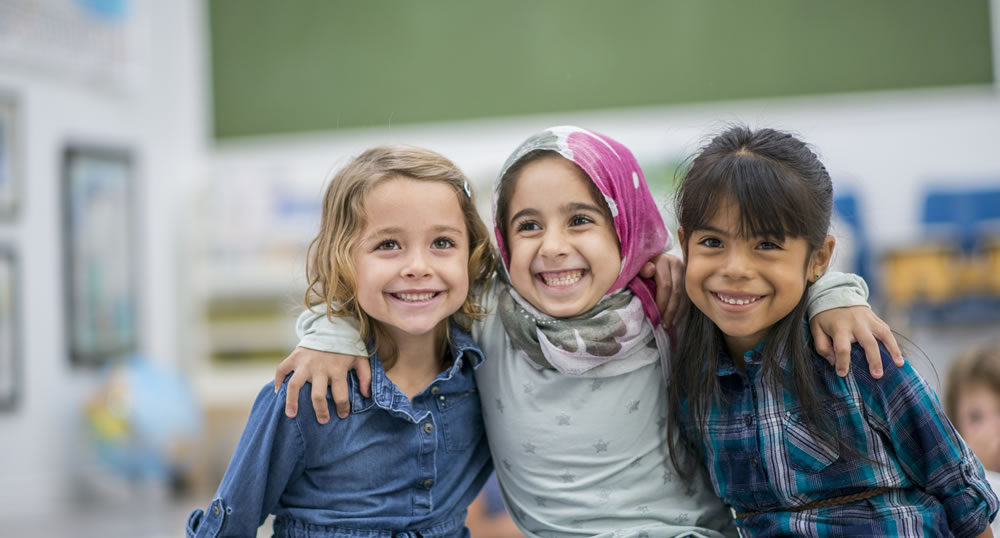Embedding multiculturalism as an everyday practice
Published on Tuesday, 11 August 2020
Last updated on Wednesday, 21 October 2020

We live in a world comprised of many cultural differences. Celebrating this diversity supports young children to foster greater understanding and inclusivity while discouraging biased attitudes. By embedding different cultural practices into the everyday, children are scaffolded to grow and learn, about the similarities and differences between themselves as well as the wider community.
Children notice differences in appearance and behaviours from a young age. Studies have shown that infants as young as six months are able to identify and categorise people by both gender and race. With this in mind, educators can actively promote awareness and understanding of different perspectives and diverse cultures.
However, promoting diversity to children is more than just promoting special cultural days in the calendar, it requires continual application of inclusive habits, lessons and practices to be embedded into the everyday activities and learning of young children.
Embedding culture into practice
Books open doors
Reading encourages children to use their imagination, exposing them to new worlds and ideas. Fill your space with books celebrating diversity, addressing important lessons and stories about diverse traditions, and cultures. Include books with characters that represent the true identities of our country, and the world. Multicultural picture books promote conversations and allow all children to see themselves in stories.
Language ignites culture
Language is an important component of culture. Actively supporting and validating a child’s language can have a big impact on how they feel about their home language and whether they'll lose or retain it. Opportunities to promote community languages include:
- On a day-to-day basis learn simple songs including a ‘Good Morning’ song and rhymes in different languages
- Both staff and children can learn simple words and phrases especially those frequently used by children with a second language
- Provide opportunities for the child, or members of their family, to come in and speak their home language with the children, thereby encouraging interest
- Ensure children’s names are pronounced correctly this demonstrates respect for the child and their culture
- Display written language other than English
- Incorporate items from other cultures such as food packaging from different countries in the home corner
Food from around the world
Make preparing and sharing food from different cultures an exciting part of your routine. Explore family food customs of the children at your service and explore ways to include these on the menu.
Invite families to share simple recipes for culturally significant foods and snacks to share with your community. Or perhaps a family could bring in a traditional dish for children to try while sharing their stories on preparation and the cultural importance of certain foods and dishes. Also consider growing plants or herbs in the garden that are significant to a culture and can be used in cooking.
Music to spread joy and understanding
Children love music. From this innate appreciation, the joy of music can be shared across cultures. Music conveys ideas and cultural norms and promotes skills such as language and movement. Experimenting with music and instruments develops group values and appreciation for the musical traditions of diverse cultures. To support appreciation of diverse musical styles you can:
- Listen to multicultural music during indoor and outdoor activities.
- Include musical instruments from around the world and let children play along
- Invite children to express themselves with movement
- Ask parents to share the music their family enjoys
- Teach children songs and dances from different nations of the world. Children will begin to see that all people like to sing and dance, but every group has its own unique style.
- Make musical instruments as a craft activity such as an African djembe (pronounced JEM-bay) drum or Spanish Maracas
Arts and crafts with creative understanding
Different cultures express themselves through celebrations and traditions that can be explored in the classroom using arts and craft materials. Multicultural arts and crafts are fun to make, and they provide a perfect hands-on learning experience. Young children enjoy and learn best when all their senses are engaged and creating artworks combines sensory learning and cognitive development with something tangible that can be taken home and remembered.
Resources and further reading
He Kupu: Belongingness in diversity
The Infant Crier: The Importance of Promoting Diversity in Early Childhood Programs
Related Articles

Bilingual teachers in demand
Recent changes in government policy may result in increased demand for bilingual teachers - particularly those who can speak Te Reo Maori or Pasifika languages.

How to celebrate indigenous languages in your centre
Languages link us to individual identity, traditional culture and memory, learn how to celebrate diverse languages in your service.

Why we need more men in early childhood
According to Child Forum, only 1.8 per cent of all early childhood education and care workers in New Zealand are male. Why is this figure still so low?
